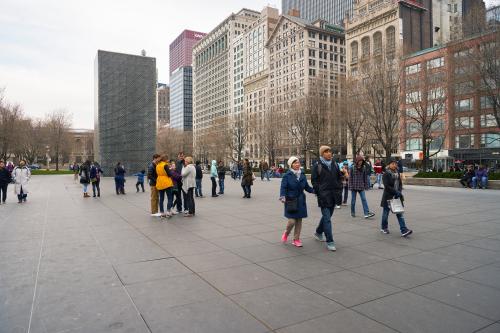During 2009, the U.S. economy was in the throes of the Great Recession, and immigration had become a highly polarized topic of debate, reflected by a rise in anti-immigrant sentiment. Immigration was high prior to the Great Recession which offi cially commenced in December 2007. While immigration seemed to come to a standstill in 2008, an increase between 2008 and 2009 may be reflective of the first signs of the comeback of the national economy. At the very least, the demand for immigrant workers seems to have reappeared, though immigrant earnings are diminished in the post-recessionary period.
Despite the national trend, metropolitan markets have experienced the recession in different ways, causing shifts in immigrant settlement patterns, at least for the time being.
How has the immigrant population changed since the recession started, nationally and across metropolitan areas? How do current fl ows, immigrant stock and characteristics compare to the pre-recession moment? This brief analyzes immigration during the 2000s, highlighting pre- and post-recession trends for the 100 largest metropolitan areas where 85 percent of the U.S. foreign-born population lives.
An analysis of national and metropolitan immigration trends surrounding the recession of 2007–2009 shows:
Immigration slowed during the Great Recession following fast paced growth. While the U.S. foreign-born population grew considerably during the 2000s, the pace of growth slackened at the onset of the recession at the end of 2007. Slower growth was seen after 2007, as the share of the national population that is foreign born has remained constant at 12.5 percent.
The recession’s impact on metropolitan immigrant settlement has been uneven. Two growth trajectories stand out among a handful of metropolitan areas: those that have “weathered” the recession and continued to receive immigrants such as Austin, Dallas-Ft. Worth, and Seattle, and those that experienced a reversal from high growth to negative growth including Phoenix, Riverside-San Bernardino, and Tampa. Overall, 35 of the top 100 metros saw significant change in their foreign-born populations during the recession.
Few impacts of the recession can be discerned in the characteristics of immigrants, pre- and post-recession. There has been a drop in the number of immigrants from Mexico, a slight increase in those with less than a high school education, an increase in those who are naturalized U.S. citizens and, not surprisingly, a rise in poverty among immigrants.
Following thirty years of unprecedented growth, immigration to the United States plateaued during the Great Recession. As the country moves into recovery mode, immigrant settlement patterns are likely to reflect economic growth across metropolitan areas. In the meantime, many regions facing budget shortfalls, unemployment, and an increased need for social services are struggling to maintain programs that benefit immigrants.



